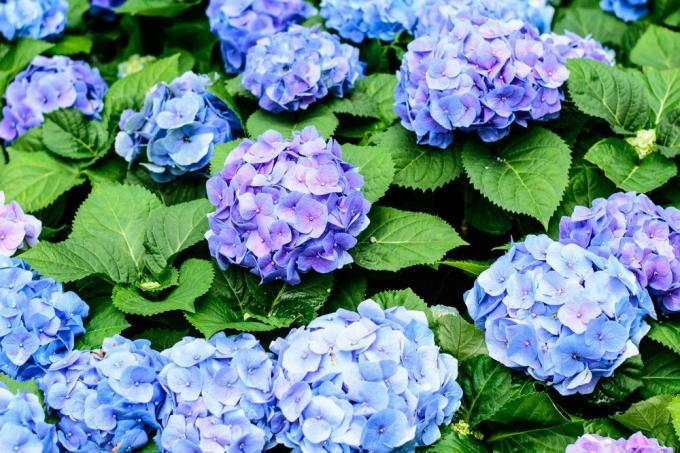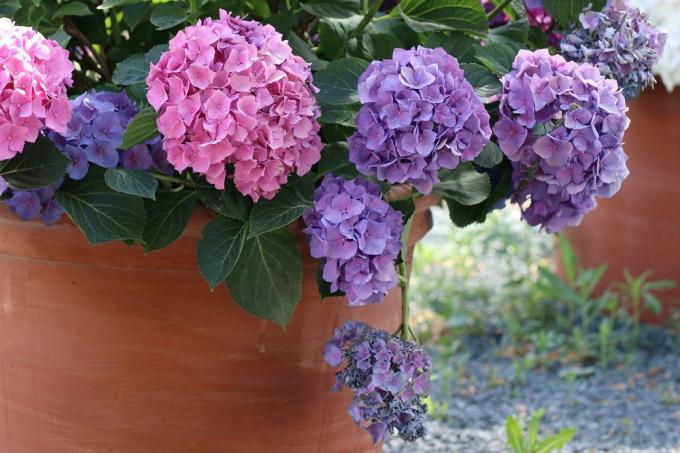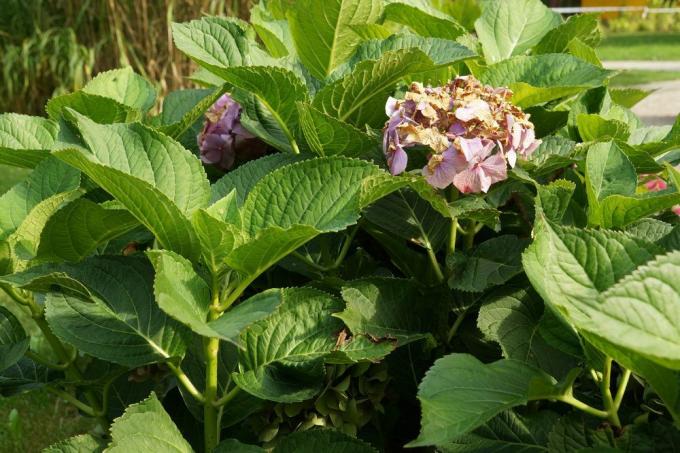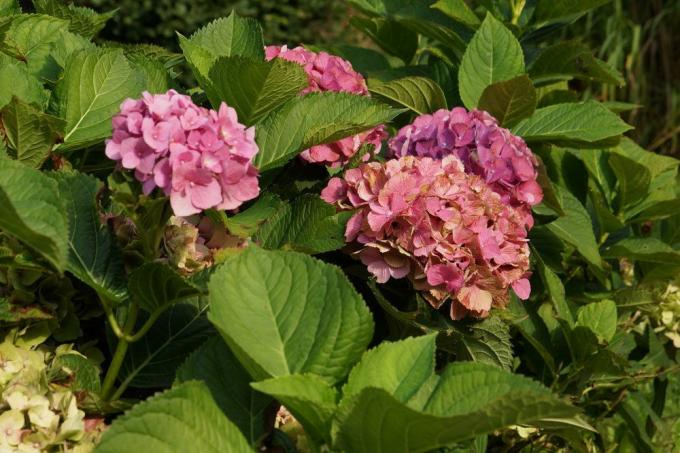
table of contents
- Possible causes
- Natural protective mechanism
- Lack of water
- Nutritional deficiency
- Unsuitable substrate
- Wrong location
- Wrong wintering
- Other helpful measures
- frequently asked Questions
Thanks to their abundant flowering, hydrangeas are a real eye-catcher in the garden - if they grow upright and healthy. But what should you do if the plants suddenly let their leaves and flowers droop?
In a nutshell
- Lack of water as the most common cause
- Care errors are not always to blame
- Note the amount of fertilizer
- Avoid direct sunlight
- no hardy plants
Possible causes
If the leaves and flowers of the hydrangea hang limp, a care error is usually the cause. However, with simple measures it is possible to restore health and thus also the appearance.
Natural protective mechanism
Unfortunately, with hydrangeas it is not uncommon for leaves and flowers to hang. In some cases, however, there is no need to worry, as it is a protective mechanism of the flowering plant. If the symptoms only appear around midday in summer, this measure protects the plant from the evaporation of the stored liquid due to the massive solar radiation. Due to the hanging parts of the plant, the surface area that the sun shines on is reduced.

Lack of water
The nickname "water slipper" is no coincidence. Hydrangeas have a very high fluid requirement. It is therefore important to check the substrate, especially in summer. As soon as the top layer has dried, the gardener has to reach for the watering can as soon as possible. Flooding is recommended as a watering method so that the water seeps into the lower layers of the earth. The gardener should use potted plants bucket remove and dip the root ball until no more air bubbles rise.
Hydrangeas are also popular cut plants because of their beautiful flowers. However, hanging parts of plants are not excluded in the vase. In this case, the flower is happy to have a full bath. The gardener puts them in the bathtub for half an hour. The vegetation floats on the surface of the water and is certainly not damaged. On the contrary, the application makes it possible to absorb liquid in large quantities and to fill the reservoirs. The gardener then shakes off excess water droplets and puts the cut flower back in the vase.
Note: Despite the high water requirement, the hydrangea does not tolerate waterlogging. The gardener should therefore only water outdoor hydrangeas when the top substrate layer is dry. When keeping it in a bucket, it should pour off the excess water in the saucer after around 15 minutes. Drainage in the ground or in a bucket is generally recommended.

Nutritional deficiency
The constant watering flushes many nutrients from the soil. Because of this, hydrangeas often lack iron. A special hydrangea fertilizer can help in this case.
Note: Not every iron fertilizer is suitable for the hydrangea. The commercially available products for a moss-free lawn also contain ingredients that damage the plants.
Unsuitable substrate
So that no waterlogging occurs, the soil must not tend to compact. Instead, it should be permeable and loose, but at the same time be able to store water. The optimal pH is between 4 and 5.5. In order to maintain the species-appropriate properties of the substrate, the gardener should repot potted plants after two years at the latest.
Note: A layer of bark mulch protects the earth from evaporation in summer.

Wrong location
The hydrangea does not feel comfortable in the blazing sun. Not only do your flowers dry out, they also get sunburned quickly. A location in partial shade is better, for example under light trees. But here, too, the gardener should prevent burning. This means watering the plant only in the morning and evening hours and only watering the substrate, but not the flower. If the garden does not offer shade, the gardener does not have to do without the abundant flowers. An awning protects the plant just as well as a tree crown or a house ledge.
Wrong wintering
Hydrangeas are unfortunately not hardy. With a cover with a jute sack or a fleece, it is still possible to maintain its bloom in the following year. It should be noted that the plants often sprout as early as February. If the gardener removes the winter protection too early, the tender shoots get frost and let the flowers and leaves droop. Gardeners can expect late frosts until the ice saints in mid-May.
Note: In order to save the hassle of winter protection, gardeners can get panicle hydrangeas in stores. These are winterproof down to -30 ° C.

Other helpful measures
Remove leaves
With cut flowers, it helps to completely remove the foliage from the stem. Thus, the hydrangea puts more energy into flower formation than into leaf shoots
frequently asked Questions
Hydrangeas are very sensitive to calcareous water. For this reason, the gardener must filter tap water prior to administration. However, collected rainwater is recommended.
To convert the pH value of the soil into an acidic environment, simple household remedies such as coffee grounds are recommended. Loose soils also offer the possibility of incorporating self-made, organic material such as compost.
If the hydrangea suffers from a pest or fungal attack, not only do the parts of the plant hang down, mostly discoloration of the leaf and a withered flower are symptoms that go with the poor appearance accompanied. The gardener should therefore first rule out the causes mentioned above before fighting an avoidable pathogen.
